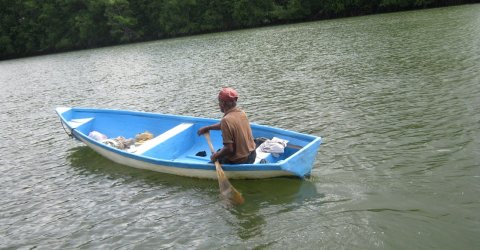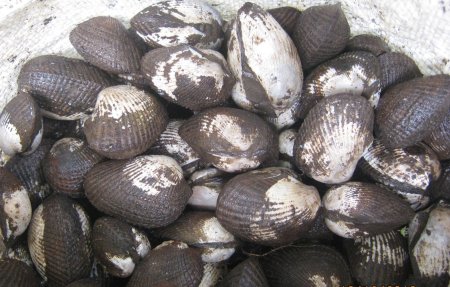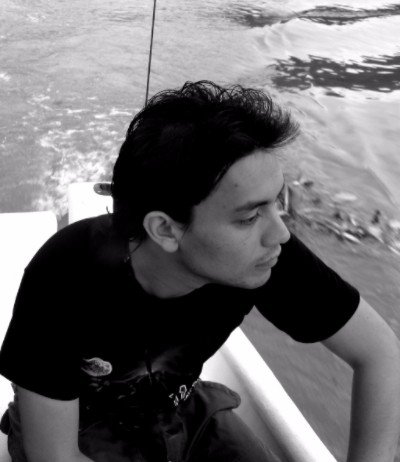
Piangüeros (shellfish harvesters) of the Térraba-Sierpe wetland, Costa Rica
Five hours into the new day, the first rays of sunlight are beginning to warm the mixture of fresh and salty waters in the channels and along the beaches of the estuarine Térraba-Sierpe Ramsar Site on the southern Pacific coast of Costa Rica. Low tide is the hour of the “pianguar”.
Piangüeros, as they are traditionally known, are people who collect by hand the bivalve molluscs known as "piangua", principally Anadara tuberculosa and A. simmilis. The harvesting of piangua has great economic and cultural importance: as well as being a source of income for the families it gives them a cultural identity, as villagers whose way of life is associated with the wetland.
At the heart of the traditional social system of the piangüeros community there is a strong solidarity, reinforced by the isolation of their settlements in the small estuarine towns of Cantarana, Ajuntaderas, Guarumal and Boca Zacate. For decades, people have worked from boats among mangroves, harvesting the "banks of piangua". Previously the molluscs were plentiful everywhere, but now the piangueros say it is necessary to get up earlier and travel further to find them.

Up to four hours at a time can be spent digging in the mud among the roots of the red mangrove trees (Rhizophora mangle) to gather the buried shellfish. They are collected in bags and taken to “el quebrador” (the processing site) where they are sold to wholesalers for $0.05 each. They are then sold on to fish shops and restaurants. This small bivalve is the basis of the typical coastal food called “Ceviche de Piangua" (small pieces of shellfish marinated in a mixture of lemon juice and orange, with celery, coriander, onion, black pepper and salt).
It is estimated that between four and six million pianguas are extracted from the mangroves every year. Approximately 50 families are engaged in this communal work for 20 days each month. Novice piangüeros can harvest around 150 pianguas per hour, but the most experienced can collect up to 300. It is work based on experience and knowledge of the place and its weather. The continuation of the traditional methods depends on the fishermen transmitting their knowledge and understanding to young people. Children also learn by combining schoolwork with a game to find the shells. The whole family gets involved.
As is common among fishing communities, these people suffer from poor access to basic goods and services, a lack of social security, low levels of state investment and a shortage of alternative products. Problems of land tenure, combined with fluctuating prices of the harvest, also exacerbate the levels of poverty among these people, who are therefore highly dependent on the resources of the mangroves.
Recently the “sons of the estuary” have formed a commercial organisation, and have received training and support to develop tourism and other activities as potential alternative sources of income.

Jose Pablo Méndez (Sociologist and Environmental Manager)
Jose Pablo graduated from the University of Costa Rica. He has twelve years of experience in socio-economic research on populations in coastal areas, wetlands, environmental flows, river basin, and protected areas in Costa Rica. This includes seven years of research into the socio-economic and cultural importance of artisanal fisheries in the Térraba-Sierpe Ramsar Site. Jose Pablo has also undertaken technical work in the evaluation of renewable energy and its socio-economic impacts, public participation processes and management of risk posed by natural hazards to vulnerable communities.